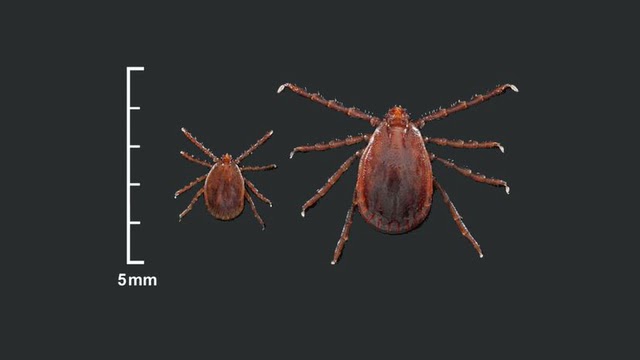Quck answer
A new tick species, the Asian longhorned tick, has been discovered in the United States for the first time in 50 years. This tick has been known to carry diseases that can harm both humans and animals, including livestock. The tick has been found in several states, and experts are concerned about its potential to spread rapidly due to its ability to reproduce quickly and in large numbers. It is important for people to take precautions to protect themselves and their pets from these ticks, such as wearing protective clothing and using tick repellent.
Wildlife

A new tick species, Haemaphysalis longicornis or the Asiatic longhorned tick, has been discovered in six mainland states of the United States. While there is no evidence yet that the tick has brought any serious diseases to the country, its presence is causing concern among farmers, naturalists, and government agencies.
The female longhorned tick is capable of fertilizing its own eggs without mating, allowing it to lay up to 2,000 fertile eggs alone. The tick has already established itself in Australia and New Zealand, where it is considered a pest. Its ability to tolerate cold weather and overwinter in the ground is another advantage.
The tick was first discovered in New Jersey when a farmer brought an unusual-looking tick from her pet sheep to an entomologist. The tick was identified as a longhorned tick, and efforts were made to eliminate it from the area. However, it has since been found in New York, Virginia, Arkansas, North Carolina, and Pennsylvania.
While longhorned ticks often transmit diseases between their victims, no dangerous viruses have been found in the ticks in the United States yet. However, it is always advised to protect oneself against tick bites by wearing long clothing, using bug spray, and regularly checking for ticks on pets and oneself.
Useful Tip
There is a common myth that suggests burning a tick is the only way to remove it once it has bitten you. However, this is not a safe method. Instead, use narrow tweezers to gently pull the tick out in a straight motion. After removal, apply rubbing alcohol to the affected area. If you experience any rashes or fever-like symptoms, seek medical attention from your doctor.
FAQ
1. What is the new tick species that has appeared in the U.S.?
The new tick species is called the Asian longhorned tick (Haemaphysalis longicornis). It is native to East Asia and was first identified in the U.S. in 2017 in New Jersey.
2. How did the Asian longhorned tick get to the U.S.?
It is believed that the tick may have arrived in the U.S. on livestock or pets that were imported from East Asia. However, the exact cause of its appearance in the U.S. is still unknown.
3. What are the potential health risks associated with the Asian longhorned tick?
The Asian longhorned tick is known to transmit diseases to both humans and animals. It can transmit a virus called SFTS, which can cause severe fever with thrombocytopenia syndrome, as well as a bacteria called Anaplasma phagocytophilum, which can cause anaplasmosis in humans and animals.
4. What states in the U.S. have reported the presence of the Asian longhorned tick?
The Asian longhorned tick has been reported in several states in the U.S., including New Jersey, Virginia, West Virginia, New York, Pennsylvania, Arkansas, North Carolina, and Connecticut.
5. What measures are being taken to control the spread of the Asian longhorned tick?
The Centers for Disease Control and Prevention (CDC) is working with state and local health departments to monitor the spread of the tick and develop strategies for controlling its population. Livestock owners are being advised to check their animals regularly for ticks and to use tick repellents and other protective measures.
6. Can the Asian longhorned tick be eliminated from the U.S.?
It is unlikely that the Asian longhorned tick can be completely eliminated from the U.S. However, efforts are being made to control its population and reduce the risk of disease transmission.
7. What can individuals do to protect themselves from the Asian longhorned tick?
Individuals can protect themselves from the Asian longhorned tick by using tick repellent, wearing long sleeves and pants, and checking themselves and their pets for ticks after spending time outdoors. It is also important to remove any ticks promptly and properly to reduce the risk of disease transmission.





Leave a Reply